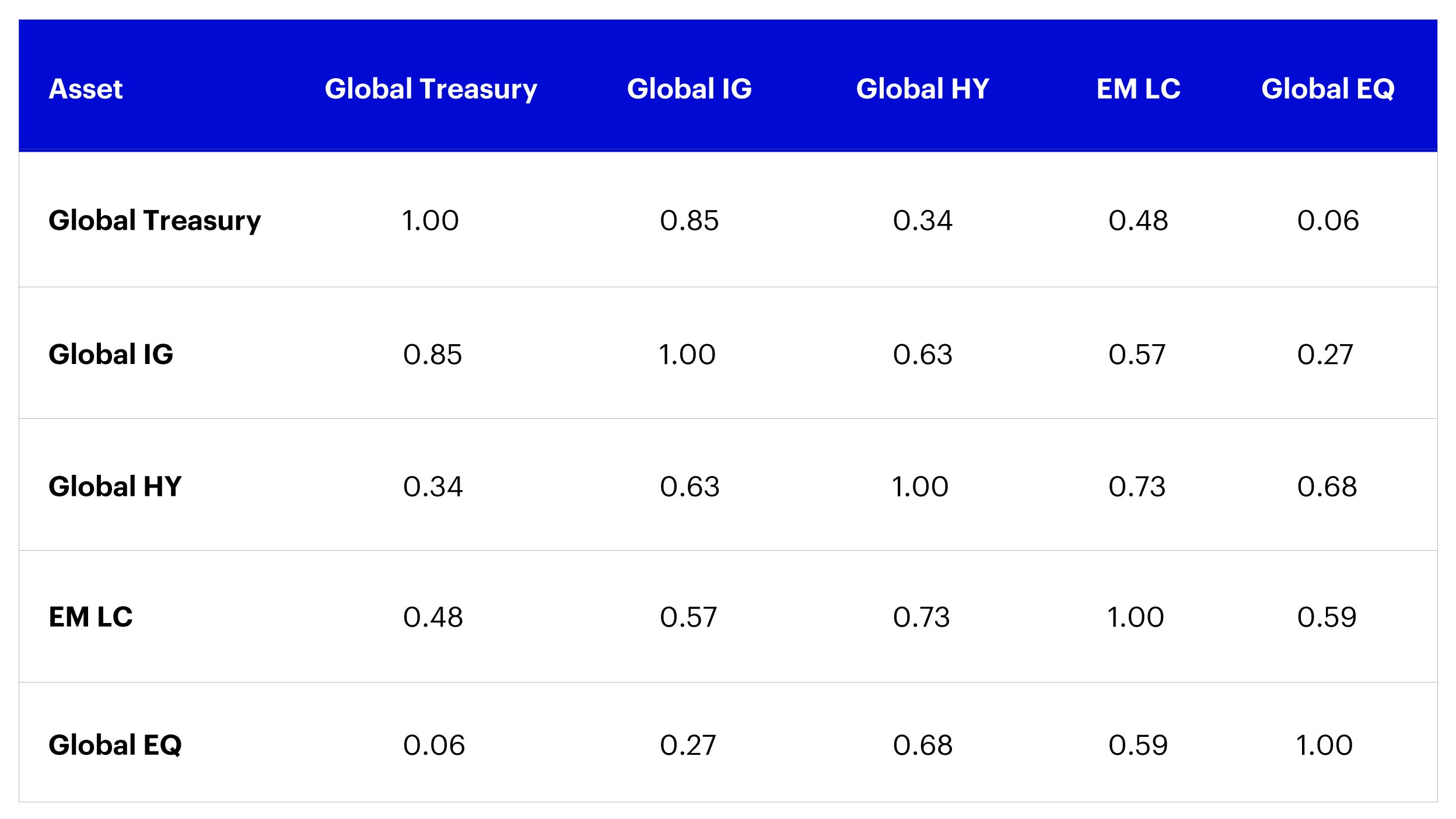Capital Market Assumptions (CMA): Emerging Market Local Currency Sovereign Debt Methodology

Key takeaways
Introduction
Present day EM local currency bond markets were established with the intention for EM countries to become more self-reliant in financing – against the backdrop of the continuous development of their domestic financial markets. The experience of the Mexican peso crisis (1994) and the Asian financial crisis (1997) revealed that the absence of domestic bond markets left EM countries exposed to the wrath of shifting foreign investor sentiment. Governments in EM realized the desirability of issuing debt in local currency and having a domestic institutional investor base, leading to the development of sophisticated domestic bond markets in many EM countries.
With better market infrastructure, global financial integration, as well as increased political stability, EM countries are now more resilient during times of crisis (Montoro and Rojas-Suarez, 2012). For similar reasons they have seen strong economic growth over the past few decades. They are expected to account for 3 of the top 10 countries by GDP in 2022, according to IMF forecasts.i To the same degree that EM economies have advanced, as have their debt markets. As we enter the post-pandemic cycle, we believe investors have many reasons to consider EM local currency sovereign debt as an attractive investment option.
- Low real yield environment: While yields have risen broadly across all assets as the US Federal Reserve and other central banks embark on a rate hiking cycle, elevated levels of inflation mean that real yields are still negative across many developed economies. EM debt carry remains high and offers opportunity.
- Diversification benefits: Investors seeking to build diversified multi-asset portfolios could consider investing in EM local currency sovereigns, exhibiting low correlations to global equities and global bonds (Figure 1). This allocation can also be useful for managing the various risk factors portfolios are exposed to.
- Growth: In many EM countries, the size of their equity and bond markets combined makes up only 90% of GDP, compared to 360% of GDP in developed countries. This suggests EM countries are underfinanced and can be supportive for sustainable bond market growth.
- Currency: Structurally many EM currencies look cheap relative to the dollar, which could be a driver of long term returns as these valuation differentials revert over time.

Source: Invesco Vision, as of Mar 31, 2022. Asset class proxy: Global Treasury – Bloomberg Barclays Global Treasury, Global Investment Grade (IG) – Bloomberg Barclays Global Aggregate – Corporate, Global High Yield (HY) – Bloomberg Barclays Global High Yield, Emerging Market Local Currency (EM LC) – JP Morgan GBI-EM Global Diversified Composite, Global Equity (EQ) – MSCI ACWI.
In this piece, we discuss how we formulate our long-term CMA for the EM local currency sovereign debt. For various reasons listed above, this asset class is looking increasingly attractive and having such exposure could serve towards a variety of investment goals. Our CMA can help to give investors more insight into how to have the appropriate allocation to this asset class within their portfolios.
Footnotes
-
i
Download World Economic Outlook database: April 2022, April 2022, https://www.imf.org/en/Publications/WEO/weo-database/2022/April/weo-report?c=512,446,564,463,926,&s=NGDPD,&sy=2020&ey=2023&ssm=0&scsm=1&scc=0&ssd=1&ssc=0&sic=0&sort=country&ds=.&br=1




